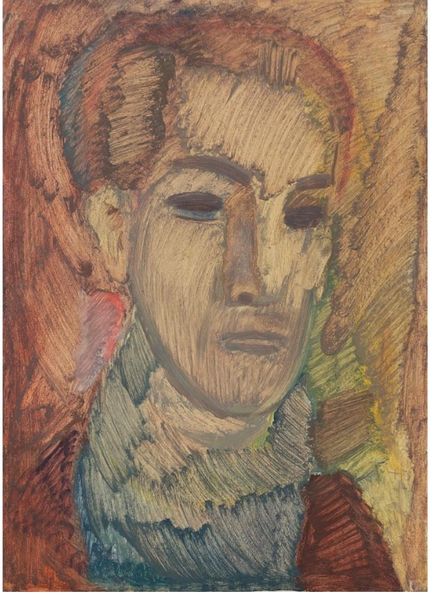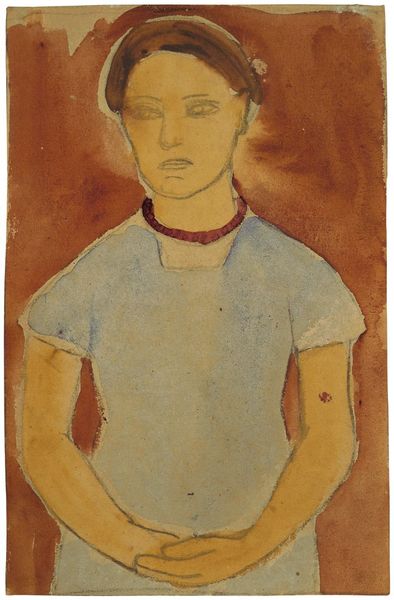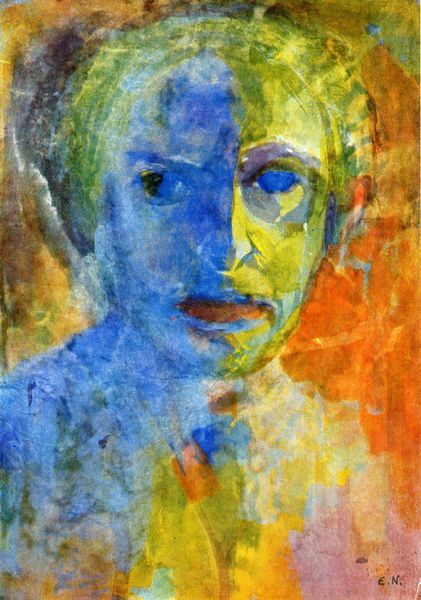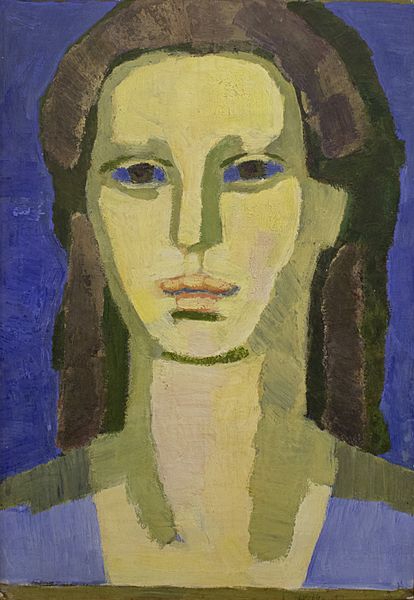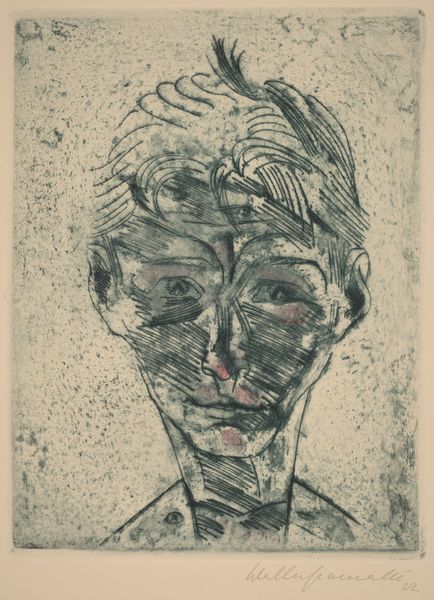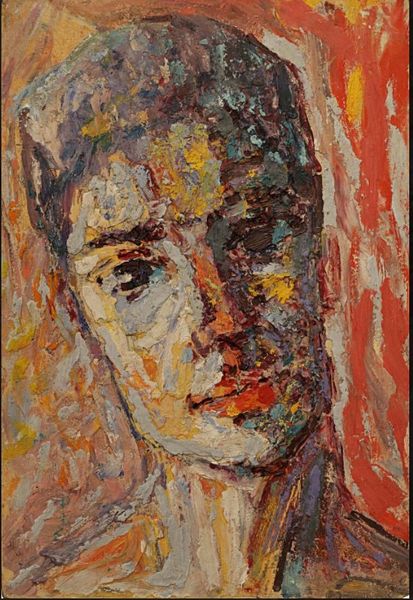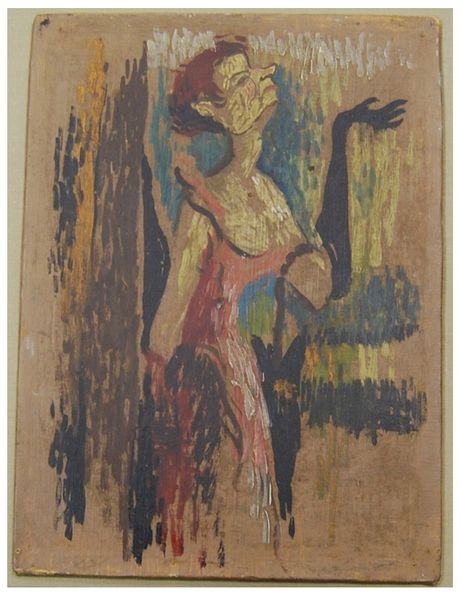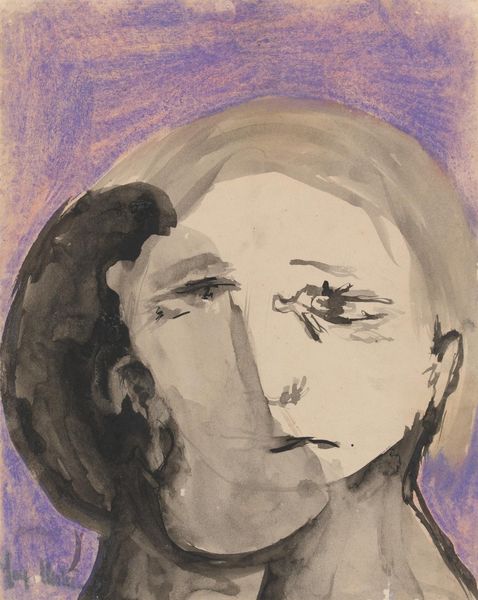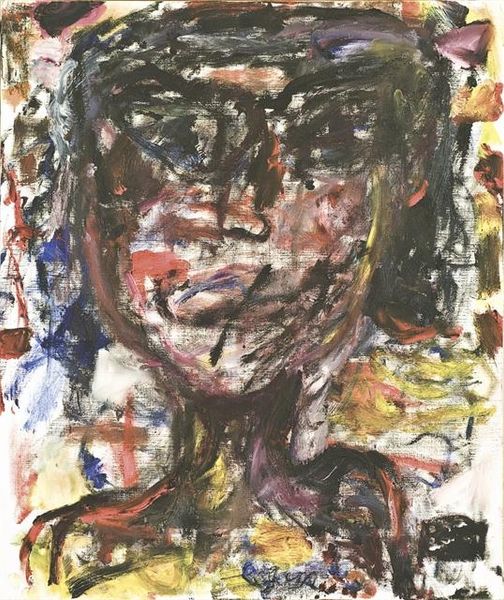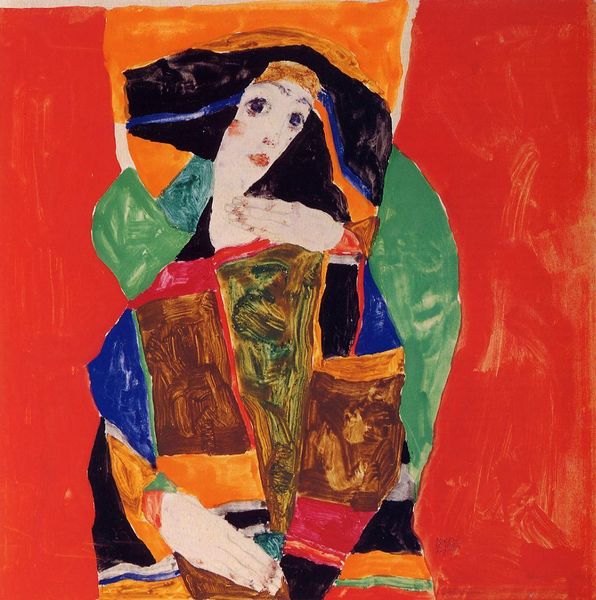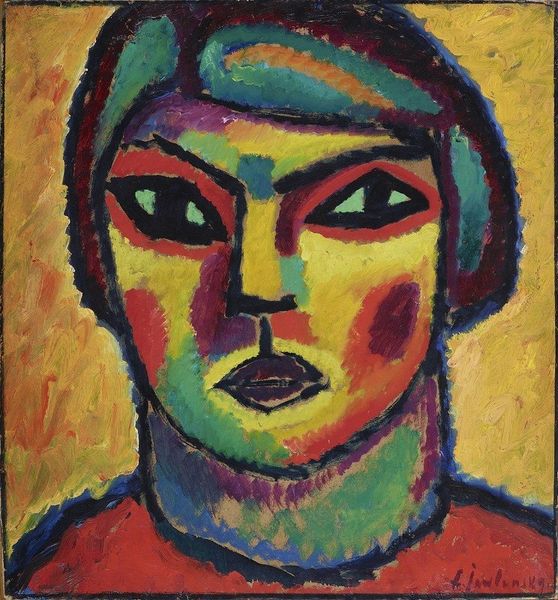
Copyright: NAMIDA AG, Glarus (displayed with the permission of Hundertwasser Non-Profit Foundation) The displayed work of art is protected under the copyright law. In particular, it is not permitted to reproduce, to alter, to print or to publish these works of art. Violations will be prosecuted according to civil and criminal law.
Curator: Here we have Friedensreich Hundertwasser’s "211 Moroccan Jewess," painted in 1954 using acrylic. Editor: Oh, my. Those arresting green lips! There’s such a raw vulnerability about her… almost as if her inner self is laid bare for us to see. Curator: Let’s consider Hundertwasser’s method. Look at how the line dictates form. The repetitive, almost obsessive use of line creates texture but also an undeniable sense of craft, even production. It almost challenges traditional, expressive painting. Editor: True, there is something intentionally "folksy" about the repetition, a rhythm almost, that counters the inherent "grandness" often attributed to portraits. I can imagine Hundertwasser humming a little tune while making each stroke, which, with its vibrant imperfections, conveys the sheer, delightful *labor* of its making! Curator: Note, too, the vibrant colors, clashing yet strangely harmonious. Consider the period; this isn't your somber, postwar realism. The application and, importantly, the material choices hint at emerging artistic movements of the time, pointing to pop art but with roots planted deeply in expressionism. Editor: Indeed. It feels both old and new, doesn't it? Her eyes seem to hold the history of centuries, yet that electric purple hair practically screams "tomorrow." What’s amazing is the collision: the face isn’t exactly…pretty in a conventional sense. Her direct gaze is somehow heartbreaking. Curator: It's that rawness, that unabashed display of...what some might call 'naive' representation, that gives it power. It acknowledges the hand of the maker, disrupting our expectations of flawless artistry. Editor: Precisely! In doing so, the artwork forces us to think and feel what labor went into capturing a woman in paint. It’s this tension – beauty vs. imperfection – that transforms her, and ultimately us as well. Curator: So, when viewing, "211 Moroccan Jewess" we should recognize the artistic process as part of its intrinsic value. This challenges conventional views of high art. Editor: Agreed. Next time you see it, consider if it has changed *you* even for a little while; if you start to view everything and everyone with slightly altered colors. It's a deeply transformative piece.
Comments
No comments
Be the first to comment and join the conversation on the ultimate creative platform.
